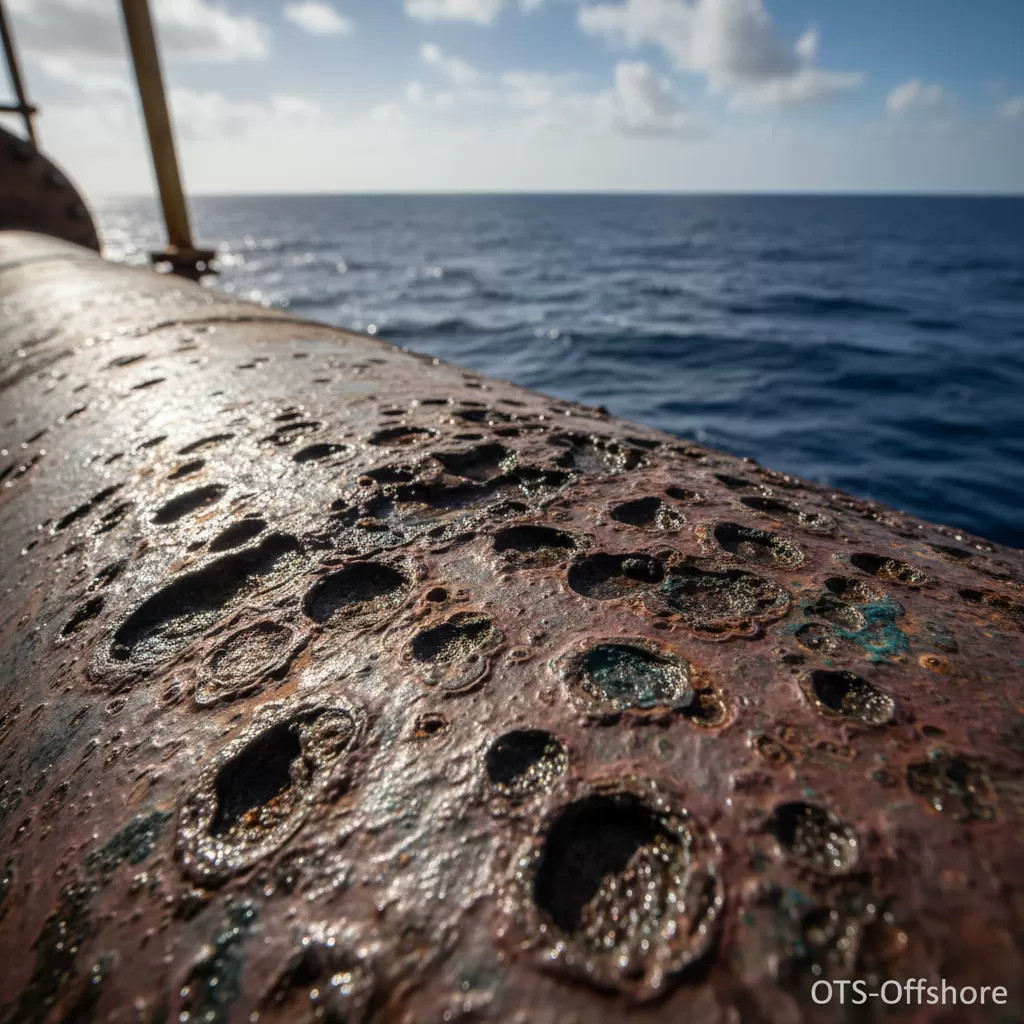The intrinsic integrity of critical infrastructure within the oil and gas and broader energy sectors relies heavily on accurate defect identification. This article delves into the crucial realm of non-destructive testing (NDT) by examining two prevalent defect types: pitting corrosion and brittle fracture, exploring their formation mechanisms, detection methodologies, and implications for asset management. Understanding these fundamental Types Defects Non-Destructive is paramount for ensuring operational safety and longevity.
Understanding Key Types Defects Non-Destructive: Pitting Corrosion and Brittle Fracture
The rigorous demands of the oil and gas industry necessitate a proactive approach to material integrity management. Non-destructive testing (NDT) plays an indispensable role in this endeavor, providing essential insights into the condition of critical assets without compromising their functionality. Among the myriad of potential material degradation mechanisms, understanding the nuances of specific Types Defects Non-Destructive, such as pitting corrosion and brittle fracture, is fundamental for effective risk mitigation and asset lifecycle optimization. This in-depth exploration aims to illuminate the characteristics, origins, and implications of these prevalent defect types, thereby enhancing the industry’s ability to maintain safety and reliability. The ability to accurately identify and characterize various Types Defects Non-Destructive is a cornerstone of modern engineering practice in demanding environments.
Pitting Corrosion: The Insidious Threat to Asset Integrity
Pitting corrosion represents a localized form of material degradation that can severely compromise the structural integrity of metallic components in the energy sector. It is characterized by the formation of small, often hemispherical or cylindrical cavities, known as pits, on the metal surface. These pits can initiate and propagate rapidly, leading to significant material loss in a confined area. The insidious nature of pitting corrosion stems from its tendency to penetrate deeply with a minimal surface indication, making early detection challenging. Understanding the electrochemical processes underlying pitting corrosion is crucial for developing effective prevention and mitigation strategies. The severity of pitting corrosion can vary significantly depending on the material, the corrosive environment, and operational conditions.
Mechanisms of Pitting Corrosion Initiation and Propagation
The initiation of pitting corrosion typically begins with the breakdown of the passive film that naturally forms on many metals, particularly stainless steels and alloys. This breakdown can be triggered by localized aggressive species in the surrounding environment, such as chloride ions (Cl-), in aqueous solutions. These ions can adsorb onto the metal surface, disrupting the protective oxide layer. Once the passive film is breached at a specific point, an electrochemical cell is established. The exposed metal beneath the breach becomes anodic, while the surrounding intact surface acts as the cathodic area. This localized electrochemical activity drives the dissolution of metal at the anodic site, leading to pit formation.
The propagation of a pit is influenced by several factors. As the pit deepens, the small electrolyte volume within the pit can become acidic due to the hydrolysis of metal ions and the release of hydrogen ions. Furthermore, the concentration of aggressive ions within the pit can increase, creating a localized environment that is far more corrosive than the bulk solution. This autocatalytic process, where the pit’s environment becomes increasingly aggressive, accelerates its growth. The geometry of the pit also plays a role; a narrow, deep pit can be more detrimental than a shallow, wide one because it is more difficult for dissolved oxygen to reach the bottom of the pit, thus perpetuating the anodic reaction.
Environmental Factors Influencing Pitting Corrosion
Several environmental parameters significantly influence the susceptibility and rate of pitting corrosion. The presence of aggressive ions, particularly chlorides, is a primary driver. Higher concentrations of chlorides accelerate pit initiation and propagation. Sulfides, in certain environments, can also contribute to pitting corrosion, especially in sour service conditions encountered in oil and gas production.
Temperature plays a crucial role; generally, increased temperatures accelerate electrochemical reactions, including those involved in pitting corrosion. However, the relationship can be complex, and specific synergistic effects with other environmental factors might occur. The pH of the environment is another critical factor. In acidic conditions, the passive film is inherently less stable, making the metal more susceptible to pitting. Conversely, highly alkaline environments can sometimes promote localized corrosion, though the mechanisms may differ.
The presence of dissolved oxygen is essential for the cathodic reaction in many pitting corrosion scenarios. Areas with limited oxygen access, such as the bottom of a pit, become anodic, while areas with higher oxygen concentration on the surface act as cathodic sites. Therefore, variations in oxygen concentration across a surface can promote pitting. Water salinity and the presence of dissolved gases like carbon dioxide (CO2) and hydrogen sulfide (H2S) in oil and gas production systems create highly corrosive environments that exacerbate pitting corrosion risks.
Detection and Mitigation Strategies for Pitting Corrosion
Detecting pitting corrosion requires specialized NDT techniques. Visual inspection, while basic, can sometimes reveal surface indications of pitting, especially if it has progressed significantly or resulted in surface discoloration. However, many pits are subsurface and difficult to detect visually.
Eddy Current Testing (ECT) is highly effective for detecting surface and near-surface flaws, including pits, in conductive materials. The electromagnetic field generated by the eddy current probe interacts with the material, and disruptions caused by pits alter the eddy current flow, producing detectable signals.
Ultrasonic Testing (UT) is another valuable technique. By transmitting ultrasonic waves into the material and analyzing the reflected signals, UT can detect internal flaws, including pits. Specialized UT techniques, such as phased array UT, can provide more detailed imaging and sizing of pits.
Radiographic Testing (RT) can also be used, particularly for detecting internal voids and material loss associated with pitting. However, its effectiveness for detecting small, shallow pits can be limited compared to ECT or UT.
Mitigation strategies for pitting corrosion involve a multi-pronged approach. Material selection is paramount; using corrosion-resistant alloys (CRAs) like duplex stainless steels or nickel-based alloys in aggressive environments significantly reduces the risk of pitting.
Protective coatings, such as epoxy or polyurethane coatings, act as a barrier between the metal and the corrosive environment. Regular inspection and maintenance of these coatings are essential.
Corrosion inhibitors are chemical additives introduced into the fluid stream to form a protective layer on the metal surface or to interfere with the electrochemical reactions of corrosion.
Cathodic protection, typically employed for pipelines and submerged structures, involves making the metal component the cathode of an electrochemical cell, thereby preventing its dissolution. This is achieved by using sacrificial anodes or impressed current systems.
Implementing strict operational controls, such as managing fluid chemistry, controlling temperature, and minimizing stagnant areas where aggressive species can concentrate, is also vital.

Brittle Fracture: The Catastrophic Failure Mechanism
Brittle fracture is a mode of material failure characterized by rapid crack propagation with little or no observable plastic deformation. Unlike ductile fracture, which is preceded by significant yielding and energy absorption, brittle fracture occurs suddenly and can lead to catastrophic structural failure with minimal warning. This type of fracture is particularly concerning in critical applications within the energy sector where component integrity is paramount. Understanding the conditions that promote brittle fracture is essential for preventing such devastating events. The transition from ductile to brittle behavior is highly dependent on material properties, temperature, loading rate, and the presence of stress concentrations.
Factors Governing Brittle Fracture Tendency
Several factors contribute to a material’s susceptibility to brittle fracture. Temperature is perhaps the most significant. Many materials, particularly ferritic steels commonly used in construction and pipelines, exhibit a ductile-to-brittle transition temperature (DBTT). Below this temperature, the material tends to fracture in a brittle manner; above it, ductile fracture becomes dominant. This transition is related to the material’s crystal structure and the mechanism of dislocation movement. At lower temperatures, atomic bonds are stronger, and the energy required for dislocation movement (which leads to plastic deformation) increases, favoring crack propagation over yielding.
Material microstructure also plays a critical role. The grain size of a material influences its toughness. Finer grain structures generally exhibit higher toughness and a lower DBTT. The presence of impurities, such as sulfur, phosphorus, and nitrogen, can segregate to grain boundaries, forming brittle phases and reducing the material’s resistance to cleavage fracture. Inclusions, such as oxides, sulfides, and silicates, can act as crack initiation sites, especially at low temperatures or high stress concentrations.
The presence of stress concentrations is another key factor. Flaws, notches, sharp corners, or existing microcracks can significantly elevate the local stress at their tips, even under moderate overall applied loads. These high localized stresses can exceed the fracture strength of the material, initiating brittle fracture, especially if the material is operating below its DBTT.
Loading rate is also important. At higher loading rates, materials have less time to deform plastically, and the fracture mode tends to be more brittle. Impact loading, for instance, can increase the likelihood of brittle fracture. The constraint imposed on the material by its geometry can also influence fracture behavior. Thick sections experience triaxial stress states, which reduce the material’s ductility and increase its susceptibility to brittle fracture.
Identifying and Characterizing Brittle Fractures with NDT
The identification and characterization of potential brittle fracture precursors and the analysis of fracture surfaces after an event are critical. Visual inspection of fracture surfaces can provide initial clues. Brittle fractures often exhibit a relatively flat, granular, or crystalline appearance, with minimal evidence of stretching or necking at the fracture edges. Cleavage facets, characteristic of the rapid propagation through the material’s grains, may be visible under magnification. The presence of a “chevron” or “radial” pattern originating from a crack initiation site can also indicate brittle fracture.
Magnetic Particle Testing (MPT) is highly effective for detecting surface and near-surface cracks in ferromagnetic materials. Brittle fractures often initiate from existing surface flaws or inclusions, which MPT can reveal.
Liquid Penetrant Testing (PT) is used to detect surface-breaking defects, including fine cracks that might precede or be associated with brittle fracture. The penetrant seeps into the crack, and when a developer is applied, it draws the penetrant out, making the crack visible.
Ultrasonic Testing (UT) can be used to detect internal flaws that might act as crack initiation sites or to assess the extent of a propagating crack. Phased array UT can provide detailed cross-sectional imaging.
Fracture Mechanics principles are essential for understanding brittle fracture. They involve analyzing the stress intensity factor (K) at the tip of a crack and comparing it to the material’s fracture toughness (KIC). When K exceeds KIC, unstable crack propagation, i.e., brittle fracture, can occur. NDT techniques are crucial for accurately sizing existing flaws, which is a prerequisite for fracture mechanics analysis.
Preventing Brittle Fracture in Energy Infrastructure
Preventing brittle fracture involves a comprehensive strategy focusing on material selection, design, fabrication, and in-service monitoring.
Material selection is paramount. Using steels with a sufficiently low DBTT for the expected operating temperatures is crucial. This often involves selecting materials with fine grain structures and controlled levels of alloying elements and impurities. Heat treatments, such as normalizing or quenching and tempering, can be employed to achieve the desired microstructure and toughness.
Design considerations are vital. Avoiding sharp re-entrant corners and minimizing stress concentrations are key. Welded joints, which can be sites of high stress and potential defects, require careful design and rigorous inspection.
Fabrication processes, especially welding, must be controlled to prevent the introduction of defects like cracks, inclusions, or hydrogen embrittlement. Proper welding procedures, preheating, and post-weld heat treatments are often necessary.
In-service monitoring and inspection are essential for detecting potential precursors to brittle fracture. This includes regular NDT of critical components to identify growing cracks or changes in material condition. Understanding the operational history, including any instances of impact or extreme temperature fluctuations, is also important.
Fitness-for-service (FFS) assessments are often conducted to evaluate the remaining life and structural integrity of components containing defects. These assessments, which integrate NDT data with fracture mechanics principles, help determine whether a component is safe to continue operating or requires repair or replacement. Maintaining a robust inspection and maintenance program is the ultimate defense against the catastrophic consequences of brittle fracture. The interplay between understanding Types Defects Non-Destructive and applying appropriate inspection methodologies is fundamental to ensuring the safety and reliability of energy assets.








